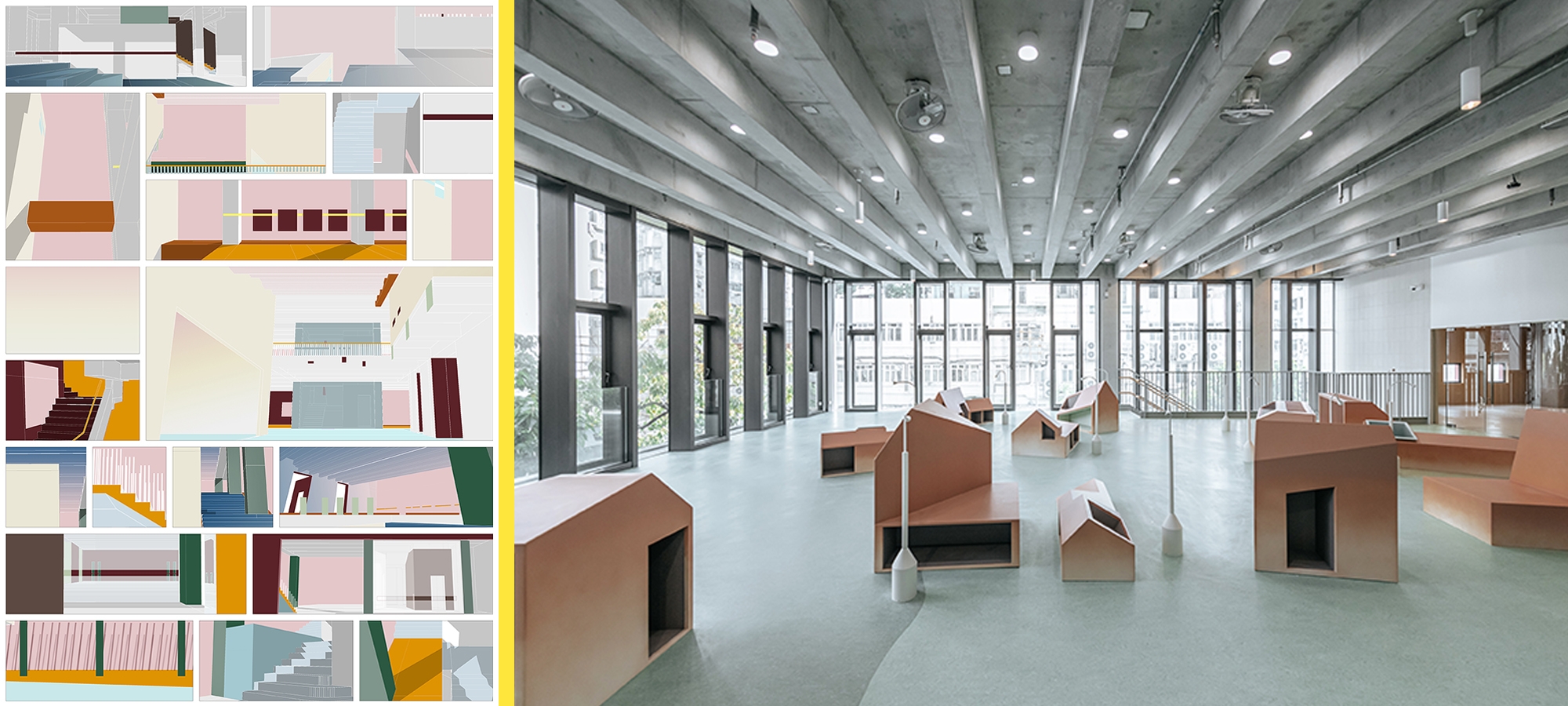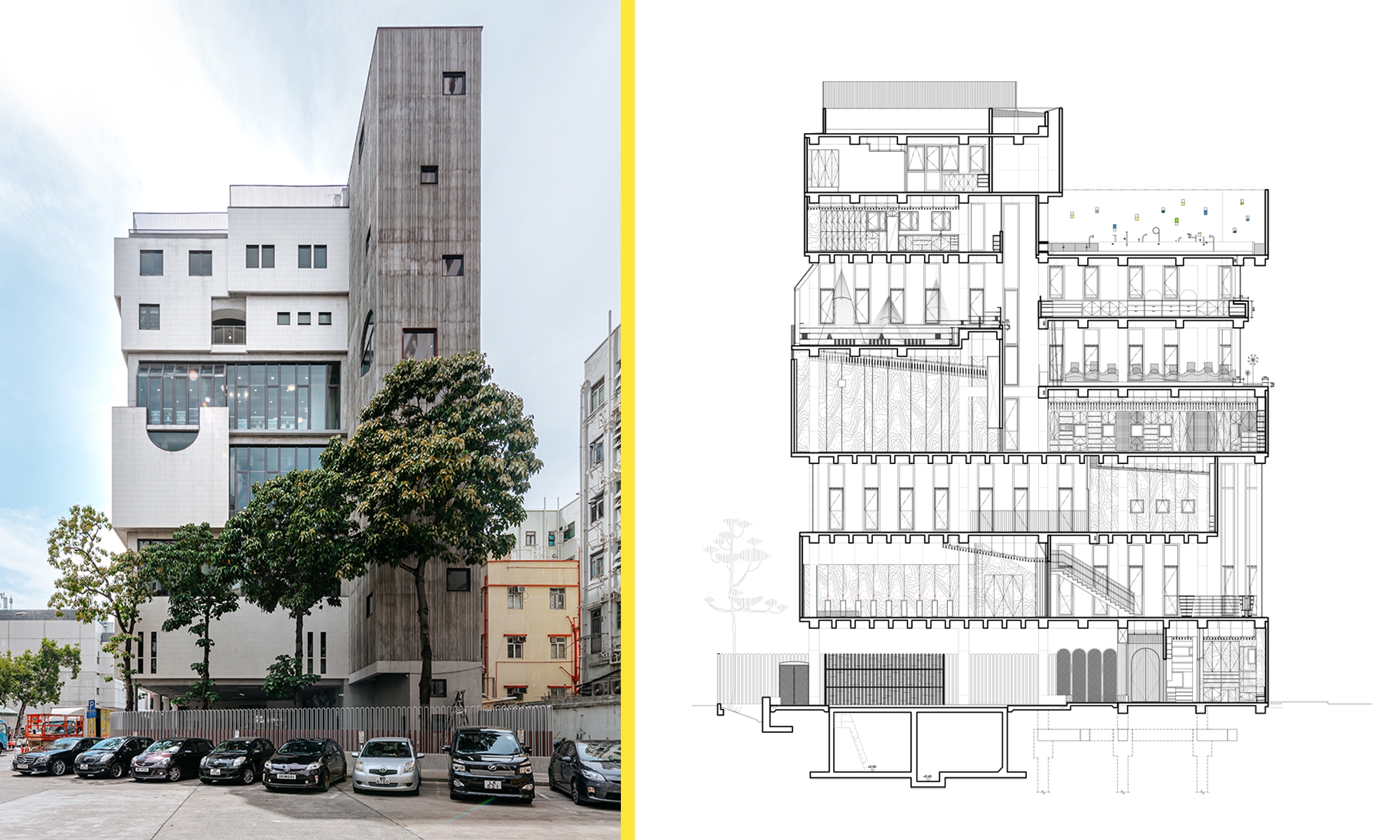St Paul's Catholic Day Nursery, 28 Wan Tau Street, Tai Po, Hong Kong | year: 2014- 2020 | status: built | type: Educational | area: approx. 3562sqm | team: Annette Chu, Charis Mok, Wendy Hui, Joanna Leung, Kan Tong, Sylvia Yeung | photo credits: Kevin Mak
Awards: Finalist for Institutional Building, HKIA Medal of the Year 2022-23 | Shortlisted for Learning Spaces, Frame Awards 2023 | Good Design Award, Japan 2022
The initial thought underlying the nursery design is to create a multifaceted arena for the little ones where interesting stories could happen amidst exciting backgrounds. Given a 18m by 30m footprint sitting in a rarely isolated and unique urban lot with 4 candlenut trees, a 8-storey stacking of many otherly worlds slowly emerges. Children shall walk through a vast vertical landscape with small huts where they shall find each hut is a little different from each other.
The building cores and service areas are situated with an intention to naturally divide the floor plate to 3 big rooms while eliminating the use of doors, encouraging children to run freely and interact. Each room faces a different facade, giving children a sense of orientation and etching memories of places as they grow up. Activity rooms such as library, art room, music room are planned to mingle with classrooms such that children can discover their interest at close proximity as they promote up the classes.
At the ′fields′ where most of the activity rooms are located, large window walls are generously proportioned, opening up the space to become an infinite scene flooded in natural light. Open-plan furniture arrangements set out the stages for children to explore and nurture their curiosity. Inside the ′huts′ are the more refined and calm classroom spaces, where solid walls finished with ceramic tiles characterise the exterior enclosing the room, small windows are punctured to frame views of the immediate context. The interplay of ′huts′ and ′field′ defines one another and varies throughout the seven storeys.
Concrete column and beam structures supports the scattered ′huts′ at different levels with the incorporation of ribbed slabs holding up large span of ′fields′ in between. The material palette incorporates slight transitions across floors, spilling in diverse colour of nature and seasons as children wander. The use of fair-faced concrete with occasional textured relief at large wall surfaces and cores brings in subtle grey hues and depth to the backdrop. Inspired by the children′s drawings displayed in the existing nursery, distinctive ′happy objects!′ that are a little awkward, out-of-proportion are thrown at various chosen corners, serving the room functions and stamping landmarks for the little ones.











